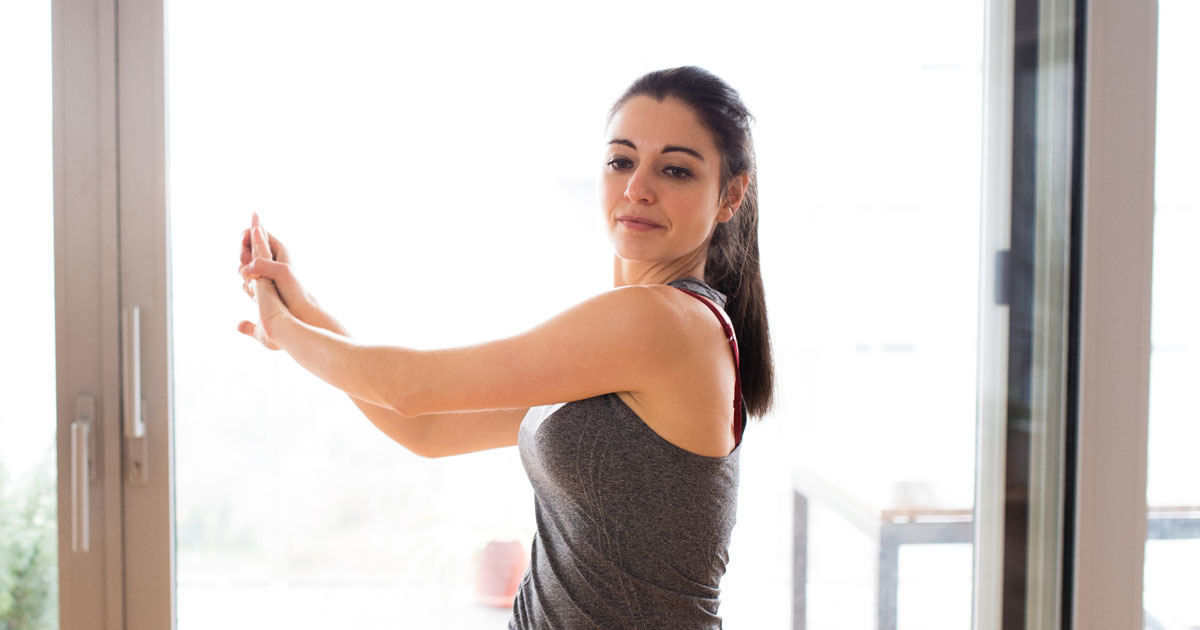The average 9-to-5 workday no longer exists.
Work days are lengthening, employees are taking work home, and after-work activities often include watching a movie or TV. As commute times lengthen, we spend more time in the car ... and even vacations can include lounging by the beach or the pool.
We sit a lot.
Studies have shown that the average U.S. adult worker sits for nearly 10 hours per day. (Curious how long you sit each day? Try the sitting-time calculator.)
While kicking your feet up after a long day sounds inviting, the World Health Organization estimates that 95 percent of the world's adult population is inactive, failing to meet minimum recommendations for health of 30 minutes of moderate to intense physical activity five times a week.
Sadly, sitting isn't exactly good for you.
The Washington Post reports that sitting for lengthy periods of time can lead to:
- Heart disease
- Foggy brain
- Strained neck
- Sore shoulders and back
- Abdominal muscle degeneration
- Inflexible spine
- Disk damage
- Tight hips and limp glutes
- Poor circulation in legs
- ... and more.
Scary—but, don't fret. There are easy solutions to alleviate the stress that sitting causes your body and health.
Straighten Up
Did you know that how you sit contributes to your health? Next time you're at your desk, sitting on the couch or at a sporting event, try leaning forward, relaxing the shoulders, supporting your back and laying your feet flat on the floor. This will help you support your back, hips and shoulders, and allow for added comfort and less wear and tear on your body. (Check out Mayo Clinic's advice on office ergonomics for further insight).
Want to get a little adventurous? Engage your entire body by sitting on a large workout ball. Your abdominal and back muscles will need to work harder to help support your body. But start out in small increments, or you'll be very sore the next day!
Stretch It Out
Stretching throughout the day has many perks. Not only does it break up the monotony of sitting at a desk, but it also increases your body's blood flow and engages your muscles. Taking a stretch break results in greater productivity, helps keep you healthy and fights the effects of sitting. There are hundreds of stretches to help you get up and get moving.
When choosing stretches, we recommend those that target your lower half, such as your glutes, hips, lower back and hamstrings. Try some yoga poses such as downward dog or a standing side bend to feel a full-body stretch. For optimum physical activity, we recommend taking a brisk, 10-minute walk. (Need some guidance? Take a look at these stretches you can do at your desk!)
Stand Up
Did you know that standing burns 50 more calories per hour than sitting? For the overachiever, we recommend using a standing desk to combat a sedentary lifestyle. Standing desks don't only get you moving, they are linked to lower rates of obesity, a decreased risk of cancer, longer lifespan and better posture.
If you choose to make the transition to a standing desk, remember to start slow. We recommend standing for 30 minutes at a time to avoid fatigue and discomfort. Support your joints and alleviate pressure on your ankles, knees and hips by standing on a yoga mat.
If you're not interested in using a standing desk, don't worry! Set an alarm once an hour to remind yourself to get up, and get moving. Take the stairs for five minutes at a time, or simply take a lap around the office. Any movement counts.
Overall, the best way to fight the effects of sitting is just to get up, move, stretch and stay active throughout your day!
Note: As always, we recommend consulting your physician before making impactful changes to your daily lifestyle.
Written by Amy Ritsema. Amy graduated from Hope College with a degree in Exercise Science and has been working in Corporate Wellness for over 25 years. Amy co-founded OnSite Wellness in 2006 and continues to enjoy helping organizations bring wellness solutions to their employees. As a Certified Worksite Wellness Program Consultant, she spends most of her workdays designing, developing and implementing wellness programs that fit the needs of each individual organization.




